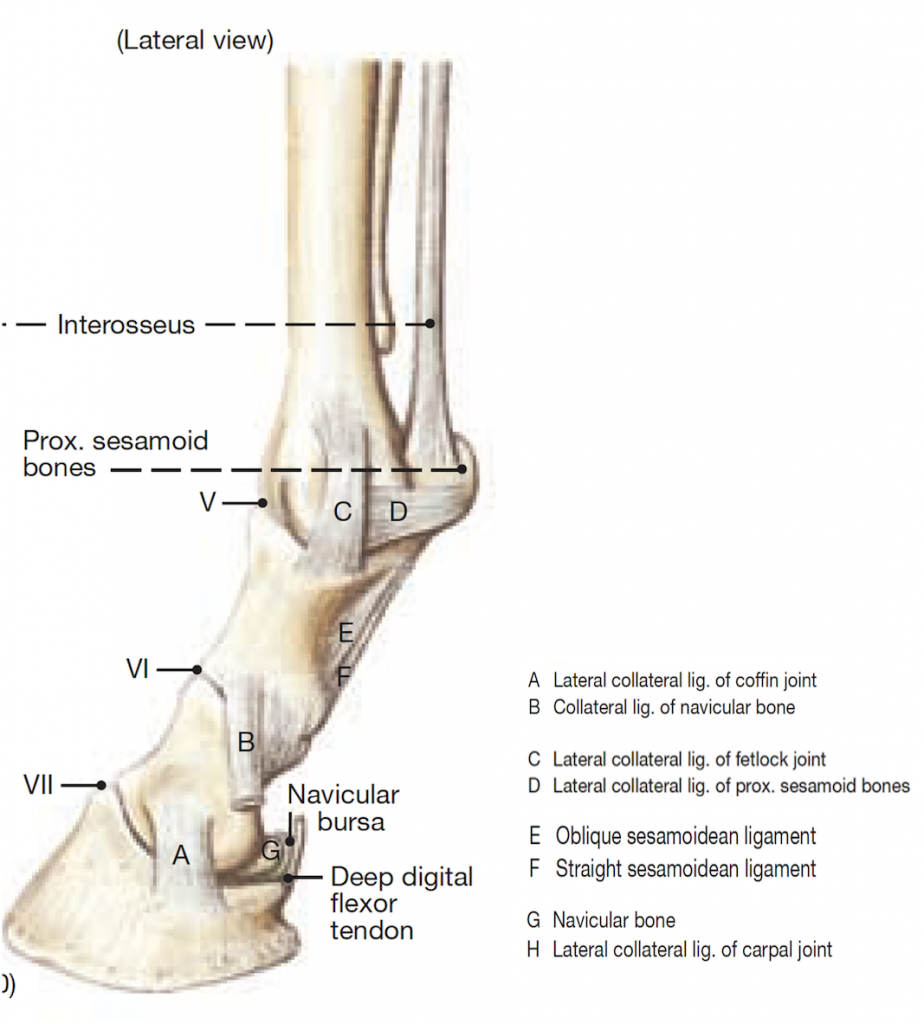Let’s say you get the devastating news your horse is lame from fetlock collateral ligament tears.

Image courtesy of pressbooks.umn.edu
There are helpful treatments. Such as rest, anti-inflammatory herbs, red light therapy, acupuncture, magnetic therapy, and the like.
But if there’s one question to always ask, its: “But why?”
If the lameness was sudden, or your horse stepped in a hole, or ripped off a shoe….anything that makes sense for a traumatic tear…..then that’s your answer for “but why?”
However, my client Helen’s horse was off and on lame for months. After many veterinarians, Helen finally paid for an MRI and found the collateral ligament tears.
By the way, these tears were only on the outside (that is, lateral) side of the right hind fetlock. Rather than evenly on both sides. Plus, the lameness was off and on. Which, to be fair, makes it difficult for veterinarians to diagnose. It was quite the mystery.
While Helen’s horse (whose name was Ruby; 12 year old Akhal-Teke mare) was resting and getting treatments to help the ligament heal, she called me out to find out why.
“This doesn’t make any sense to me,” Helen said. “It would be one thing if there was an accident. But this? Sometimes I could only feel her being off. Sometimes she was visually lame. If we rested her a week, she’d be fine for a few days. I’m worried it will happen again if I don’t figure out why.”
My short list of top possibilities for collateral ligament tear in the hind leg is:
Uneven hoof trimming
Pelvis misalignment (which puts uneven weight on the legs)
Hock issues (if the hock hurts, the horse may land unevenly on the leg to avoid pain)
Hip misalignments
How do you figure out which of these it is?
1) Watch the horse walk from behind.
Make sure the legs go forward perfectly straight. There should be no swinging out of the leg, or ‘wobbling’ of the hock, or the stifle or hock poking out at an angle.
When I watched Ruby walk, her left hind leg moved forward straight. Her right hind, however, moved in a “C” shape. That is, out wide at first and then curved inward to land too far towards the center.
2) Use a TBT practitioner to find the cause using energywork.
With TBT, we can ask the horse yes/no questions. Alternatively we can “trace” the compensation through the body to find the original, root cause.
In Ruby’s case, I traced her compensation using the TBT energy all the way up to her hip joint.
Ruby’s hip joint was considerably misaligned. This caused her leg to travel in a “C” shape, which caused excessive landing weight to be on the outside (lateral) side of the fetlock. Over time, this excess “wear and tear” literally created tears in the collateral ligament.
Once her hip alignment was correct, her leg travelled straight.
No more sleepless nights worrying about “will it come back?”


